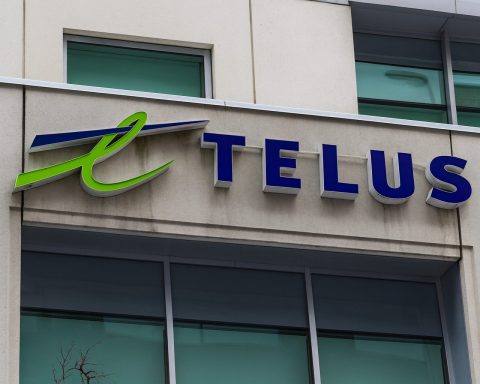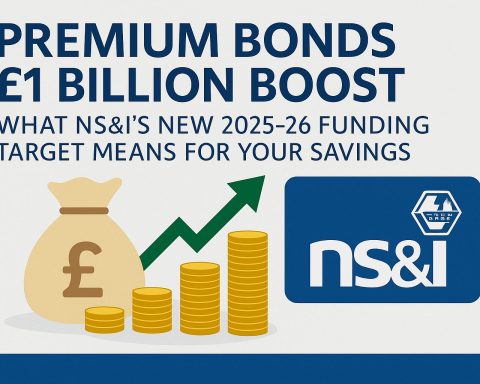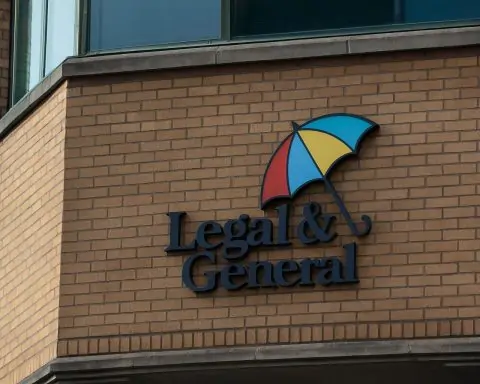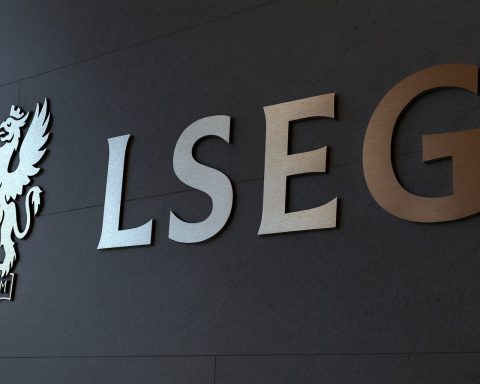London stocks nudged higher on Friday, with the FTSE 100 outperforming a flat Europe as upbeat corporate news and broker upgrades helped investors look past a tax-heavy UK Budget, a sharp slump in car production and a rare global futures trading outage.
By the London open, the blue‑chip FTSE 100 was up about 0.2% at 9,709.62, while the mid‑cap FTSE 250 was broadly flat and the AIM All‑Share added around 0.2%. [1] By mid‑morning, the FTSE 100 was still ahead, trading roughly 10 points higher around 9,704 in quiet post‑Thanksgiving volumes. [2]
Across the Channel, the pan‑European Stoxx 600 was flat, with Germany’s DAX and France’s CAC 40 barely moved, leaving London as one of the few regional markets making progress. [3]
Year‑to‑date, UK equities remain in solid shape: the FTSE 100 has delivered close to a 19% gain in 2025 so far, with an average dividend yield just above 3%, while the more domestically focused FTSE 250 is up over 7% plus income. [4]
Budget, Sterling and Rate‑Cut Hopes Shape the Backdrop
Friday’s trade unfolded in the shadow of Rachel Reeves’s Autumn Budget, unveiled on Wednesday, which raised an additional £26 billion a year in taxes and pushed the UK tax burden to its highest level since the post‑war years. [5]
Key measures include:
- Extending the freeze on income tax thresholds, dragging more earners into higher bands over time. [6]
- Targeting wealthier households and assets with property‑related and other structural tax changes. [7]
- Almost doubling Remote Gaming Duty from 21% to 40% from April 2026 and lifting the online betting duty from 15% to 25%, while leaving taxes on in‑person gambling untouched. [8]
Despite the squeeze, sterling has actually enjoyed something of a relief rally. The pound is on course for its best week in more than three months, as investors judged the Budget broadly fiscally disciplined, even if politically contentious. [9] On Friday, sterling eased around 0.2% versus the dollar to about $1.32, trimming some of those gains but still up roughly 0.85% on the week. [10]
For the Bank of England, the macro backdrop remains finely balanced:
- CPI inflation slowed to 3.6% in October from 3.8% in September, the first cooling in several months, helped by softer gas and electricity price rises. [11]
- Core CPI eased to 3.4%, still well above the 2% target but moving in the right direction. [12]
Markets now expect the BoE to resume rate cuts at its December meeting after holding Bank Rate steady in November. [13]
BoE policymaker Megan Greene, speaking on Friday, cautioned that the Budget’s reduction in household energy bills is likely to have only a temporary effect on inflation, describing it as a one‑off that the Bank may “look through” when setting policy. [14]
FTSE 100: Broker Upgrades Lift Industrials and Travel, While Whitbread and Burberry Drag
The FTSE 100’s modest advance was driven less by macro data and more by a cluster of high‑profile broker calls that set the tone for several heavyweight stocks.
Winners: easyJet, Weir, IMI and Kingfisher
easyJet was among the index’s top risers. Shares climbed after Bernstein upgraded the budget airline to “outperform” from “market‑perform” and raised its price target to 560p from 520p. [15]
The upgrade comes hot on the heels of easyJet’s results earlier this week, where the group revealed that its holidays division has already hit its medium‑term profit target ahead of schedule, reinforcing the case for a rerating in the travel stock as capacity growth slows across the sector. [16]
Engineering names also benefited:
- Weir Group gained nearly 2% after Exane BNP reinitiated coverage with an “outperform” rating and a 3,450p target, signalling confidence in the group’s exposure to mining and energy capex. [17]
- IMI added more than 1% as the same broker restarted coverage at “outperform” with a 3,100p target, highlighting the company’s strength in niche flow‑control technologies. [18]
Retail and consumer exposure was mixed. Kingfisher, owner of B&Q and Screwfix, ticked higher after confirming the launch of a fresh £50 million share buyback, the fourth tranche in a wider £300 million capital return programme. [19]
Laggards: Whitbread and Burberry Under Pressure
The biggest blue‑chip loser was Whitbread, owner of the Premier Inn chain. The stock fell around 5–7% in morning trade after Bernstein delivered a stinging double downgrade to “underperform” from “outperform”, slashing its price target to 2,500p from 3,600p. [20]
Analysts cited rising cost pressures and softer consumer spending as key risks, warning that higher employment costs following the Budget could squeeze margins at a time when the group is investing heavily in its German expansion. Recent underperformance has already left Whitbread shares down about 14% over the last month. [21]
Luxury fashion house Burberry also extended recent weakness, falling a couple of percent after JPMorgan downgraded the stock to “underweight” from “neutral”, even as it nudged its price target up to 950p. [22] The bank flagged ongoing demand concerns in China, a crucial market for the brand, where patchy macro data continues to cloud the outlook for high‑end discretionary spending. [23]
FTSE 250: Mitchells & Butlers Steals the Show
If the FTSE 100 was about broker calls, the FTSE 250 was all about Mitchells & Butlers (M&B).
The pub and restaurant operator — behind brands such as All Bar One, Toby Carvery and Harvester — rocketed between 8% and 10%, topping the mid‑cap leaderboard after posting forecast‑beating full‑year results. [24]
For the 52 weeks to 27 September 2025, M&B reported:
- Like‑for‑like sales up 4.3%, with both food and drink sales rising around 4% on broadly flat volumes — meaning genuine pricing power rather than simply more covers. [25]
- Adjusted operating profit of £330 million, up 5.8% year‑on‑year and slightly ahead of market expectations. [26]
- Operating margin improving to 12.2% from 12.0% despite roughly £100 million of cost headwinds in the year, mainly from higher wages and national insurance. [27]
- Net debt (excluding leases) reduced by £146 million to £843 million, strengthening the balance sheet. [28]
Management said like‑for‑like sales have grown a further 3.8% in the first eight weeks of the new financial year, suggesting momentum has carried into FY2026. [29]
Shore Capital hailed the performance as “excellent”, arguing that the group’s Ignite improvement programme and estate quality leave it well placed to cope with additional cost inflation of around £130 million expected in the year ahead — including the impact of this week’s Budget. [30]
The strong update fed into a broader theme investors have been watching all year: despite a cost‑of‑living squeeze, UK consumers are still prioritising affordable out‑of‑home leisure, a dynamic that continues to support select hospitality names even as others struggle.
Small and AIM Caps: Essensys Bid Talk, Quadrise Warning, Gold Miners Shine
Away from the main indices, stock‑specific stories dominated the small cap space.
Essensys: Profit Warning Meets Takeover Interest
Flexible workspace software group essensys issued a trading warning, saying annual revenue will fall short of earlier expectations as customers delay rollouts. At the same time, founder and non‑executive director Mark Furness tabled a preliminary, non‑binding cash proposal at 20p per share, a roughly 29% premium to Thursday’s 15.5p close. [31]
The unusual combination of profit warning and potential management‑led buyout left the stock modestly higher — up around 3% — as investors weighed near‑term earnings pressure against the prospect of a take‑private deal.
Quadrise: Delays Hit Sentiment
Energy transition technology firm Quadrise tumbled more than 10% after admitting that full‑year progress had “not been as expected”, with delays to key marine fuel trials and revised payment schedules for its Valkor project in the US. [32]
Although the company stressed it ends the year in a stronger cash position, the update underscored how execution risk remains high in early‑stage clean‑fuel technologies, particularly where commercialisation depends on large‑scale industrial partners.
Gold and Mining Juniors Find Support
Gold‑focused names enjoyed brighter news:
- Serabi Gold reported sharply higher earnings and cash generation for the nine months to 30 September, benefiting from record quarterly output and firmer bullion prices. EBITDA jumped around 95% year‑on‑year to $48.2 million and the miner’s cash balance rose from $22.2 million at the end of 2024 to $38.8 million. [33]
- Metals Exploration said new channel sampling at its La India gold project in Nicaragua indicates a potential 100‑ to 300‑metre extension to the planned open pit, describing the find as an “immediate opportunity” and flagging a follow‑up drilling programme. [34]
Against a backdrop of copper flirting with $11,000 per tonne and lingering concerns about future metal supply, such updates helped keep interest alive in UK‑listed mining juniors. [35]
Data Watch: Car Production Slump and Softening Business Confidence
Friday also brought fresh evidence of how cyber risk and higher borrowing costs are rippling through the real economy.
JLR Hack Drives 23.8% Slump in October Car Output
Figures from the Society of Motor Manufacturers and Traders (SMMT) showed UK car production plunged 23.8% year‑on‑year in October to 59,010 units, the weakest October since the early 1950s. [36]
The main culprit remains the major cyberattack on Jaguar Land Rover earlier this autumn, which forced the UK’s largest carmaker to halt production for around six weeks and caused knock‑on disruption across its supply chain. [37]
When commercial vehicles are included, total UK vehicle output slid nearly 31% to just over 62,000 units. Yet there was one bright spot: production of electric and hybrid vehicles rose more than 10%, meaning nearly half of all cars built in October were electrified models. [38]
The data highlight both the vulnerability of UK manufacturing to large operational shocks and the ongoing structural shift towards cleaner transport — a key theme for investors in auto suppliers, battery metals and charging infrastructure.
Housing and Business Sentiment
In housing, Zoopla reported that UK home sales fell 4% in the four weeks to 23 November, with buyer demand down 12% year‑on‑year as households paused decisions amid concern about property tax changes in the Budget. Average UK house prices rose 1.3% over the year to around £270,200, but London and the South of England saw their first price declines in 18 months. [39]
On the corporate side, Lloyds Bank’s Business Barometer showed overall business confidence dropping eight points to 42% in November — still comfortably above its long‑run average of 30%. Firms remain positive on hiring, with more than half planning to increase headcount over the next year, and price pressures are easing to their lowest level since January. [40]
Taken together with cooling inflation, the picture is of an economy that is slowing but not stalling — a backdrop that helps explain why domestically focused UK shares have delivered respectable, if more modest, gains compared with the export‑heavy FTSE 100 so far in 2025. [41]
Global Factors: CME Outage and Fed Cut Bets
Globally, risk sentiment was dominated by two themes: a rare technical failure at the world’s largest derivatives exchange, and speculation about imminent US rate cuts.
A cooling issue at data centres used by CME Group overnight forced a halt in trading of key futures contracts, spanning FX, commodities, US Treasuries and stock indices such as the S&P 500 and Nasdaq 100. [42]
Some European brokers temporarily suspended contracts for difference and other leveraged products linked to those futures, leaving traders “flying blind” without live prices in already thin post‑Thanksgiving markets. [43] While cash trading in London equities continued as normal, the outage reinforced awareness of operational risk in an increasingly electronic market infrastructure.
At the same time, comments from senior Federal Reserve officials this week strengthened expectations of a December US rate cut, fuelling a late‑November rally in global equities and supporting cyclical sectors like miners and energy — both of which helped the FTSE 100 edge higher on Friday. [44]
What Today’s Moves Mean for Investors
For investors following the UK market via Google News or Discover, several takeaways stand out from today’s session:
- UK equities continue to grind higher despite a heavy Budget.
The FTSE 100’s small gain, in the face of a tax‑raising fiscal package and weak industrial data, underlines how much good news on inflation and global interest rates is already in the price — but also how resilient large UK dividend‑payers remain. [45] - Stock selection is critical.
Broker actions triggered meaningful moves in individual names: easyJet, Weir and IMI rose on positive recommendations, while Whitbread and Burberry were hit by downgrades linked to cost pressures and China risk. [46] - Domestic demand isn’t dead.
Mitchells & Butlers’ strong trading, coupled with continued pub and leisure resilience, suggests UK consumers are still willing to spend selectively on experiences, even as housing and car production data flash amber. [47] - Cyber and policy risks are increasingly material.
The JLR cyberattack’s lingering impact on output and the steep tax hikes for online gambling show how operational and regulatory shocks can quickly reshape investment narratives in both old‑economy and digital‑first sectors. [48] - Index reshuffles and sector rotation will be key into year‑end.
Interactive investor’s early estimates suggest advertising giant WPP could drop out of the FTSE 100 in favour of property group British Land, a reminder that winners and losers in the AI era and in UK real estate are still being sorted. [49]
As always, today’s moves are only a snapshot. With a pivotal Bank of England meeting, further Budget detail and the next batch of inflation and growth numbers all due in the coming weeks, the UK stock market looks set for an eventful end to 2025.
Disclaimer: This article is for information only and does not constitute investment advice or a recommendation to buy or sell any security. Always do your own research or consult a regulated financial adviser before making investment decisions.
References
1. www.lse.co.uk, 2. www.ig.com, 3. www.sharecast.com, 4. www.ii.co.uk, 5. www.reuters.com, 6. www.reuters.com, 7. www.theguardian.com, 8. www.theguardian.com, 9. www.reuters.com, 10. www.reuters.com, 11. www.ons.gov.uk, 12. www.ons.gov.uk, 13. www.reuters.com, 14. m.in.investing.com, 15. www.lse.co.uk, 16. www.lse.co.uk, 17. www.lse.co.uk, 18. www.lse.co.uk, 19. www.lse.co.uk, 20. www.lse.co.uk, 21. www.ii.co.uk, 22. www.lse.co.uk, 23. www.sharecast.com, 24. www.lse.co.uk, 25. www.lse.co.uk, 26. www.directorstalkinterviews.com, 27. www.lse.co.uk, 28. www.directorstalkinterviews.com, 29. www.directorstalkinterviews.com, 30. www.sharecast.com, 31. www.investments.halifax.co.uk, 32. www.lse.co.uk, 33. www.lse.co.uk, 34. www.lse.co.uk, 35. www.share-talk.com, 36. www.reuters.com, 37. cybermagazine.com, 38. www.reuters.com, 39. m.in.investing.com, 40. www.lloydsbankinggroup.com, 41. www.ii.co.uk, 42. www.reuters.com, 43. www.reuters.com, 44. www.ig.com, 45. www.lse.co.uk, 46. www.ig.com, 47. www.directorstalkinterviews.com, 48. www.smmt.co.uk, 49. www.ii.co.uk









